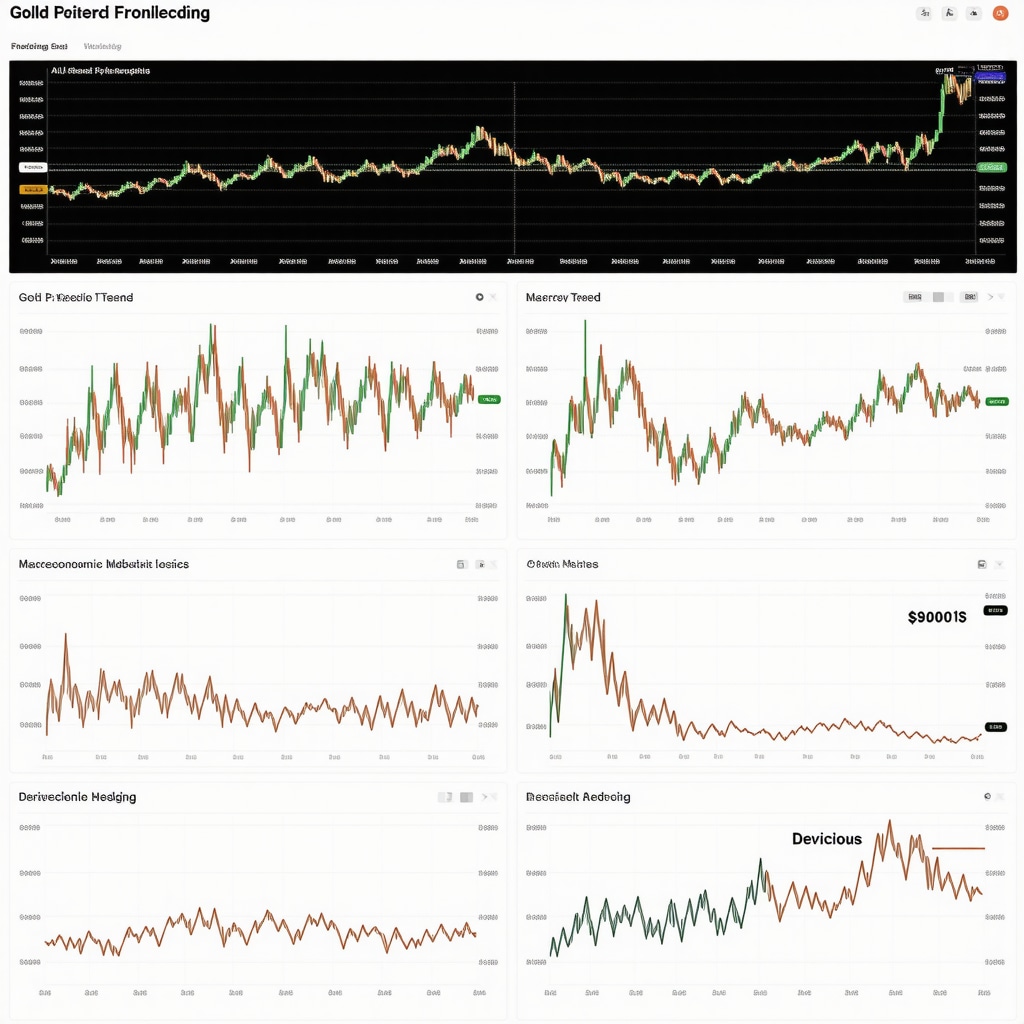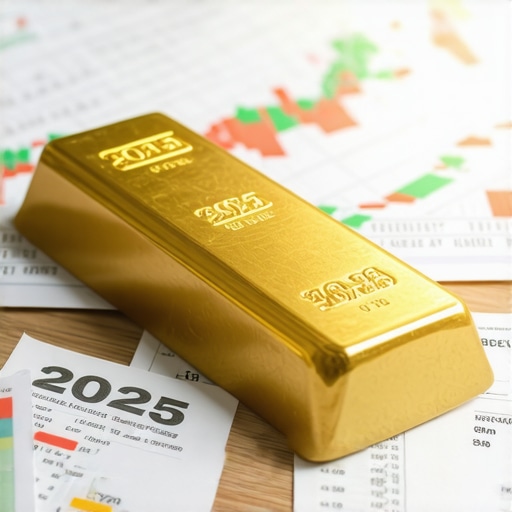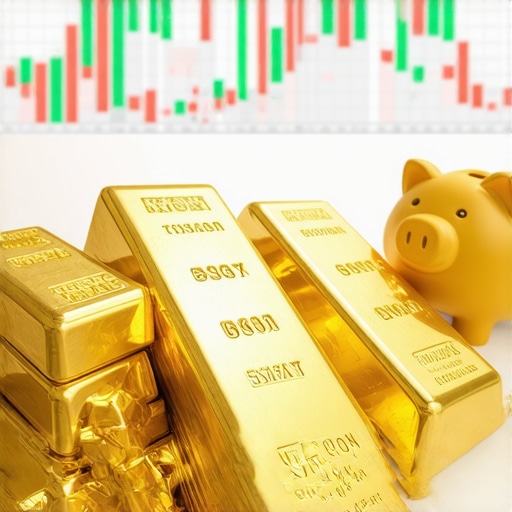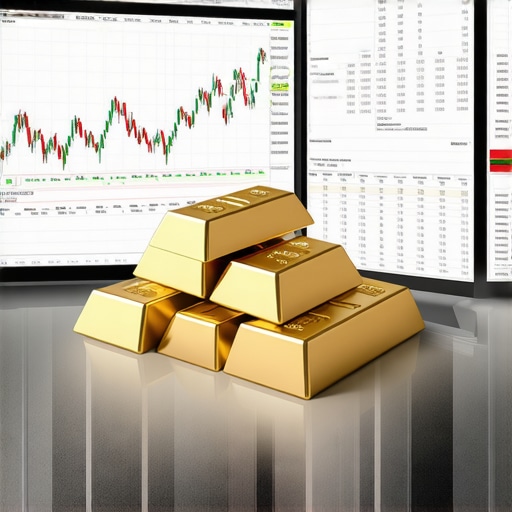Understanding the Strategic Role of Gold ETFs in Modern Investment Portfolios
In an era marked by economic volatility and inflationary pressures, investors increasingly turn to gold exchange-traded funds (ETFs) as a sophisticated vehicle for preserving capital and achieving portfolio diversification. Unlike direct physical gold ownership, gold ETFs offer liquidity, ease of access, and cost efficiency, positioning them as an indispensable component of a balanced investment strategy. This comprehensive roadmap unpacks the complexities of initiating gold ETF investments with an expert lens, emphasizing nuanced market dynamics and strategic considerations.
Key Criteria for Selecting Gold ETFs: Beyond the Surface Metrics
Effective gold ETF investment necessitates a rigorous evaluation of fund structure, management credibility, expense ratios, and underlying asset transparency. Investors must discern between ETFs that hold physical gold bullion and those tracking gold futures or mining stocks. For example, funds such as SPDR Gold Shares (GLD) provide direct exposure to physical gold, thereby aligning price movements closely with bullion markets, whereas others incorporate derivatives, introducing layers of risk. Additionally, understanding the implications of ETF liquidity and bid-ask spreads is crucial to minimize transaction costs and slippage in volatile markets.
What Are the Advanced Risk Factors and Market Nuances in Gold ETF Investing?
Beyond traditional market risks, gold ETFs are subject to nuances like counterparty risk, regulatory changes, and tax treatments differing by jurisdiction. For instance, the interaction between gold prices and macroeconomic variables such as real interest rates, currency fluctuations, and geopolitical tensions must be monitored continuously. Investors should also consider the impact of central bank gold purchasing policies, which historically affect gold’s price trajectory. Furthermore, understanding the specific tax implications of gold ETF dividends and capital gains is essential for optimizing after-tax returns, a topic extensively discussed in financial journals including the CFA Institute Publications.
Implementing a Robust Investment Plan: Building a Balanced Gold ETF Portfolio
Constructing a gold ETF portfolio involves aligning investment horizons, risk tolerance, and strategic goals. A diversified approach often integrates gold ETFs with other gold-related assets such as bullion and mining stocks to mitigate sector-specific volatility. This layered strategy enhances resilience against market downturns and inflationary cycles. For detailed methodologies on portfolio composition, readers are encouraged to explore the guide on building a balanced gold ETF portfolio for 2025 growth, which offers actionable insights rooted in recent market analyses.
Optimizing Entry Points and Monitoring Market Signals for Gold ETFs
Expert investors leverage technical analysis and macroeconomic indicators to time entries and exits in gold ETFs effectively. Monitoring real-time data on gold demand trends, supply constraints, and geopolitical developments enables informed decision-making. Incorporating insights from gold price forecasts and market sentiment analyses can significantly enhance investment outcomes. For advanced strategies, the resource Gold Price Forecast 2025: Market Insights & Expert Predictions provides a comprehensive outlook on key drivers influencing gold prices.
Ready to Elevate Your Gold Investment Strategy?
Explore our extensive expert content to deepen your understanding of sophisticated gold investment techniques and share your own insights with a community of seasoned investors. Visit Top Gold Investment Strategies to Boost Portfolio Returns to start refining your approach today.
Integrating Macroeconomic Insights for Dynamic Gold ETF Positioning
To master the complexity of gold ETF investments, it is critical to incorporate macroeconomic variables such as inflation expectations, real interest rates, and currency fluctuations into your analysis. Gold’s inverse relationship with real interest rates means that periods of declining real yields often bolster gold prices, making ETFs an attractive hedge. Additionally, currency volatility, especially involving the US dollar, can significantly impact gold ETF valuations given their pricing in dollars. Understanding these dynamics allows investors to anticipate market shifts and adjust their gold ETF allocations proactively.
Moreover, geopolitical tensions and central bank interventions remain pivotal. For example, sustained central bank gold purchases can tighten supply and push prices higher, as detailed in the analysis of central bank buying and its price effects. These insights enable investors to refine timing strategies and risk exposure within gold ETF portfolios.
Leveraging Diversification: Combining Gold ETFs with Physical Gold and Mining Stocks
While gold ETFs offer liquidity and convenience, incorporating physical gold and mining stocks can enhance portfolio robustness. Physical gold provides a tangible asset free from counterparty risk, making it a reliable store of value during systemic crises. Conversely, mining stocks offer leveraged exposure to gold price movements but come with operational and geopolitical risks intrinsic to the mining sector.
A well-balanced portfolio might blend these components to optimize risk-adjusted returns. For investors seeking practical guidance on these combinations, the resource Smart Gold Investment Strategies: Balancing Coins and ETFs presents actionable frameworks tailored for 2025 market conditions.
How Can Advanced Technical Analysis Enhance Timing in Gold ETF Trading?
Advanced investors often employ sophisticated technical analysis tools—such as moving average convergence divergence (MACD), relative strength index (RSI), and Fibonacci retracement levels—to identify optimal entry and exit points in gold ETF trading. Understanding patterns like head-and-shoulders or double bottoms can signal trend reversals or continuations, enabling tactical positioning amid market volatility.
Integrating these tools with fundamental analysis of macroeconomic trends allows for a holistic approach, mitigating risks associated with abrupt market shifts. For example, combining technical indicators with insights from the Advanced Gold Trading Techniques to Maximize 2025 Profits article can empower investors to navigate complex market environments with confidence and precision.
Tax Efficiency and Regulatory Considerations in Gold ETF Investments
Tax treatment of gold ETFs can vary significantly depending on jurisdiction and fund structure. Some ETFs are taxed as collectibles, subjecting gains to higher capital gains tax rates, while others may qualify for more favorable securities tax treatment. It is vital for investors to consult with tax professionals to optimize after-tax returns and comply with evolving regulations.
Furthermore, regulatory changes affecting ETF disclosures, custody requirements, and counterparty risk management can influence investment decisions. Staying informed through reputable financial institutions and regulatory bodies, such as the CFA Institute Publications, helps investors anticipate and adapt to these changes effectively.
Investors interested in deepening their expertise on tax and regulatory frameworks are encouraged to explore specialized resources and professional advice tailored to their specific investment context.
Join the Conversation: Share Your Insights and Discover Advanced Gold Investment Strategies
Engage with a community of knowledgeable investors by sharing your experiences and strategies in gold ETF investing. Your insights can help others navigate market complexities while you gain fresh perspectives. For a deeper dive, explore our Top Gold Investment Strategies to Boost Portfolio Returns and contribute to the evolving dialogue on smart gold investing.
Decoding the Impact of Global Monetary Policies on Gold ETF Valuations
Global monetary policies wield profound influence over gold prices and, by extension, gold ETFs. Central banks’ decisions on interest rates, quantitative easing programs, and foreign exchange interventions create ripple effects that investors must meticulously analyze. For instance, accommodative monetary stances tend to suppress real yields, historically favoring gold as a hedge against fiat currency depreciation. Conversely, tightening cycles may pressure gold prices, impacting ETFs holding physical bullion or derivatives differently depending on their exposure.
Moreover, the interplay between emerging market policies and gold demand introduces complex dynamics. Emerging economies with rising inflation and currency volatility often see increased domestic gold buying, which can bolster global prices. Understanding these macroeconomic interdependencies is essential for tailoring gold ETF strategies that anticipate policy shifts rather than react to them.
Harnessing Quantitative Models and AI for Predictive Gold ETF Portfolio Optimization
The advent of machine learning and advanced quantitative models has revolutionized how investors approach gold ETF portfolio management. By integrating vast datasets — including macroeconomic indicators, geopolitical risk indices, and market sentiment analytics — AI-powered algorithms can forecast gold price trajectories with unprecedented granularity.
These models facilitate dynamic portfolio rebalancing, optimizing allocations between gold ETFs, mining stocks, and physical assets in response to predicted market regimes. For example, regime-switching models can signal when to increase exposure to gold ETFs during anticipated inflationary upswings or geopolitical tension spikes. Such sophistication enhances risk-adjusted returns and mitigates drawdowns in volatile environments.
Research published by the National Bureau of Economic Research illustrates how predictive analytics improve asset allocation efficiency in precious metals investing, underscoring the transformative potential of these technologies.
What Are the Challenges and Limitations of AI-Driven Gold ETF Strategies?
Despite their promise, AI-driven investment strategies face inherent challenges. Data quality and model overfitting can lead to misleading signals, while black-box algorithms may obscure decision rationale, complicating risk management. Additionally, sudden regime shifts — such as unexpected geopolitical events or policy reversals — can invalidate model assumptions, resulting in rapid portfolio underperformance.
Investors should therefore integrate AI insights with expert judgment and maintain robust contingency frameworks. Continuous model validation and adaptation to evolving market structures are paramount to harnessing AI effectively within gold ETF investment programs.
Advanced Hedging Techniques: Using Options and Futures to Mitigate Gold ETF Volatility
Experienced investors often complement gold ETF holdings with derivative instruments like options and futures to hedge against adverse price movements. Protective puts can cap downside risk, while call options enable participation in upward price moves without direct exposure. Futures contracts allow for tactical adjustments in portfolio duration and sensitivity to gold price fluctuations.
Implementing these strategies requires nuanced understanding of contract specifications, margin requirements, and potential basis risk between derivatives and underlying gold ETFs. Moreover, timing and strike selection are critical to balancing cost-efficiency with effective risk mitigation.
For a comprehensive primer on these sophisticated hedging methodologies, consult the CME Group’s Educational Resources on Precious Metals Futures and Options, which offer authoritative guidance tailored to professional investors.
Ready to Integrate Cutting-Edge Techniques into Your Gold ETF Strategy?
Elevate your investment approach by exploring our curated content on advanced gold investing frameworks and derivative risk management. Engage with expert analyses and community discussions at Top Gold Investment Strategies to Boost Portfolio Returns to refine your portfolio with precision and confidence.
Decoding the Confluence of AI Analytics and Gold ETF Portfolio Management
The integration of artificial intelligence and machine learning into gold ETF investment strategies marks a paradigm shift in portfolio optimization. Advanced algorithms assimilate multifaceted datasets—ranging from inflation metrics and geopolitical risk indices to investor sentiment—to construct predictive models that anticipate market regimes. This dynamic approach enables proactive portfolio rebalancing, enhancing risk-adjusted returns amidst fluctuating economic landscapes.
In practice, regime-switching models identify inflationary spikes or geopolitical tensions as trigger points to adjust gold ETF exposure, thus safeguarding assets during volatility. These AI-driven insights, when combined with traditional fundamental analysis, provide a robust framework for navigating the complex gold market.
Dissecting the Regulatory and Tax Complexity in Gold ETF Investments
Investors must remain vigilant regarding divergent tax treatments and regulatory frameworks governing gold ETFs globally. Some jurisdictions classify gold ETFs as collectibles, imposing higher capital gains taxes, while others treat them like conventional securities, facilitating more favorable tax outcomes. Additionally, evolving regulations around custody, transparency, and counterparty risk influence fund selection and risk management strategies.
Engaging with authoritative resources such as the CFA Institute Publications equips investors with timely updates on compliance and tax optimization tactics, essential for maintaining portfolio efficiency and legality.
Mastering Derivative-Based Hedging: Options and Futures in Gold ETF Volatility Mitigation
To attenuate price volatility inherent in gold ETFs, sophisticated investors deploy derivatives including options and futures contracts. Protective put options serve as insurance against downside risk, while call options afford leveraged exposure with capped losses. Futures contracts enable tactical duration adjustment, aligning portfolio sensitivity with anticipated market movements.
However, these instruments demand granular understanding of contract specifications, margin implications, and basis risk—the potential divergence between derivative pricing and underlying ETF values. Strategic strike price selection and timing optimize hedging cost-efficiency without sacrificing portfolio resilience.
For an in-depth exploration, the CME Group’s Educational Resources on Precious Metals Futures and Options provide comprehensive guidance tailored to professional-market participants.
How Can Investors Balance AI-Driven Models with Human Expertise in Gold ETF Strategy Execution?
While AI offers unparalleled analytical depth, it is imperative to mitigate limitations such as data biases, model overfitting, and opacity of algorithmic decision-making. Market anomalies, sudden geopolitical shifts, or policy reversals may render model predictions less reliable, necessitating human oversight. Integrating AI insights with seasoned investor judgment and adaptive risk frameworks ensures robust, responsive gold ETF portfolio management.
Continuous model validation, stress testing against historical shocks, and scenario analyses are critical to maintaining efficacy. This hybrid approach harmonizes quantitative precision with qualitative nuance, optimizing strategic outcomes in dynamic markets.
Engage with Advanced Gold Investment Insights and Elevate Your Portfolio Strategy
Delve deeper into these sophisticated methodologies and join a community of expert investors committed to mastering gold ETF complexities. Access premium analyses and contribute your perspectives at Top Gold Investment Strategies to Boost Portfolio Returns to transform your investment approach with precision and foresight.

Expert Insights & Advanced Considerations
Integrating Macroeconomic Regime-Switching Models Enhances Timing Precision
Utilizing regime-switching quantitative models that incorporate inflationary trends, real interest rate shifts, and geopolitical risk indices provides a strategic edge in timing gold ETF allocations. Such models allow investors to anticipate market regime changes rather than react post hoc, improving risk-adjusted returns in volatile environments.
Balancing Physical Gold with ETFs and Mining Stocks Mitigates Multifaceted Risks
A diversified gold portfolio that merges physical bullion with gold ETFs and select mining stocks leverages the liquidity and cost-efficiency of ETFs, the tangible security of physical gold, and the leveraged upside potential of mining equities. This triangulation addresses counterparty, operational, and market risks holistically.
Advanced Hedging Using Options and Futures Is Essential for Volatility Management
Deploying sophisticated derivative strategies, including protective puts, call options, and futures contracts, allows nuanced management of downside risk and portfolio duration. Mastery of contract specifics, margin requirements, and basis risk is critical to optimize cost-efficiency without undermining portfolio resilience.
AI-Powered Analytics Must Be Complemented with Human Oversight to Avoid Pitfalls
While AI-driven models deliver unparalleled predictive capabilities, their susceptibility to data biases, overfitting, and unforeseen regime shifts necessitates integration with expert judgment and adaptive risk controls. Continuous validation and stress testing fortify strategy robustness.
Curated Expert Resources
CFA Institute Publications – Authoritative insights into evolving regulatory frameworks, tax implications, and advanced portfolio management techniques for gold ETF investors.
National Bureau of Economic Research (NBER) Papers – Empirical research on quantitative models and machine learning applications in precious metals investing.
CME Group Precious Metals Education – Comprehensive educational materials on futures and options, critical for understanding derivative hedging strategies.
BuyingGoldNow.com Guides – A suite of specialized articles such as building balanced gold ETF portfolios and advanced gold trading techniques, offering actionable frameworks tailored for 2025 market conditions.
Top Gold Investment Strategies to Boost Portfolio Returns – An expert-curated resource to deepen strategic knowledge and connect with a community of sophisticated gold investors.
Final Expert Perspective
Mastering gold ETF investment in today’s complex financial landscape demands a convergence of quantitative sophistication, diversified asset integration, and vigilant risk management. The nuanced interplay of macroeconomic variables, regulatory landscapes, and technological innovations creates both challenges and opportunities. Employing a balanced portfolio approach—anchored by physical gold, ETFs, and mining stocks—while harnessing AI analytics and derivative hedging, positions investors to capitalize on gold’s hedge qualities effectively. For those committed to elevating their portfolio strategy, engaging with advanced resources and peer insights is indispensable. Explore further at Top Gold Investment Strategies to Boost Portfolio Returns and join a community dedicated to precision and foresight in gold ETF investing.









